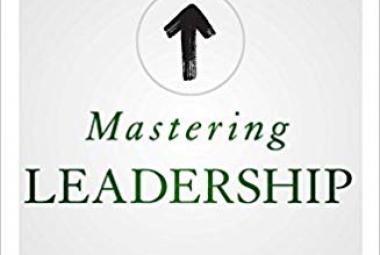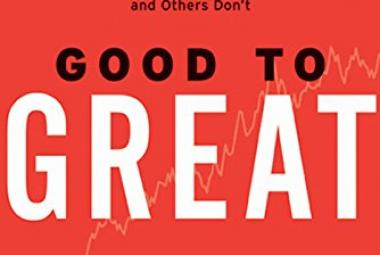In his book The Leadership Pipeline, Ram Charan describes the pressing problem of processes within organizations to develop their future leaders and to give a helping hand to solve this problem.
This article describes the 7 leadership phases that Charan describes, from Self-manager to Enterprise Manager (CEO), with 6 transitions in between that a leader must endure to reach the next level of leadership. In addition, the model that Charan describes to assess employees is discussed.

Figure 1: six transitions of leadership.
SOURCE: https://leadershippipelineinstitute.com/services-leadership-pipe-implemen.aspx
Charan describes seven levels of leadership with SIX TRANSITIONS OF LEADERSHIP in between. The best leaders in every organization are the leaders who have grown through each of these levels, in order to learn the values and skills on their way to the next level (also see figure 1 above).
The first transition is about managing yourself to managing others. The biggest challenge in this transition is that you have to learn to let others do work instead of doing it yourself. This means you have to learn to plan, delegate, and learn to judge the performance of others. In terms of values, the biggest change at this level is that you have to believe in the usefulness of managers, instead of tolerating it. Because people who are often promoted to this layer because of their exceptional knowledge of their current role, there is a risk that the new manager will compete with his team members, or simply micro-manage them.
The second transition is about managing others to leading managers. And the most important skill you need to learn here is to be able to build a good team of managers. The amount of work you do yourself becomes less and less, and you are therefore responsible for developing a good team that delegates the work for you. At this level it is first necessary to recognize the strengths in people that you do not own yourself.
The third transition describes the growth of leading managers to functional manager. At this level you are really taken out of your comfort zone because you are dealing with functional managers from other positions than the position, which you have grown into. You have to take a long-term perspective (3-5 years) and discuss resources with colleagues. You also have to learn how your function serves the general business objectives, and learn how the business model works.
The fourth transition then is from functional manager to business manager. And in this step you have to adjust your view from product focus to profit focus. The biggest challenge is therefore to make decisions based on financial data such as costs and revenues, and to assess all functions objectively (and not to improve the position in which you have been promoted to). At this level, it is important to learn to reflect on yourself and learn independently in order to learn how to deal with new external factors that play a role, such as governments, customer groups, and geographical challenges.
Transition five is from business manager to group manager. And this too is a heavy transition. The group manager is responsible for investing and divesting in different businesses (portfolio strategy), so that groups of business managers will always be dissatisfied. The group manager should be involved with coaching and development of business managers for half of the time, about 25% of the time with strategic thinking, and 10-20% of the time supporting the CEO.
The final transition is from group manager to Enterprise manager, or CEO, the most visible leadership position of the organization, where you may also have to deal with stock market values and shareholders, various committees and advisory bodies and the media. Important challenges of the Enterprise manager are: delivering continuous predictable results, giving direction to the organization (more than just a vision on paper), ensuring that all layers under him / her coach their team to continuously fill the pipeline, and get things done when a problem occurs.

Figure 2. Performance /potential matrix of the Drotter Human Resources institute
SOURCE: https://slideplayer.com/slide/6191622/
The higher in the organization you clime, the more time you spend coaching and developing the layers below you. Ideally, each manager develops at least two team members who could replace him or her in the long term to prevent haven to hire leaders from out of the organization. To increase the focus on the leadership pipeline, Charan recommends changing the way of PERFORMANCE ASSESSMENT within the organization.
On the basis of a quadrant with two axes and three levels, nine boxes are created in which an employee can be in and all are described positively (see also figure 2 above).
In the potency axis three types of potential are described: Turn Potential means that you estimate that the employee can reach the next level of leadership between now and within 3-5 years. Growth potential means that the person remains on the same leadership level, but it is likely to assume that he or she can take on more responsibilities than he or she currently has. Mastery potential, finally, means that the person develops at his or her current level.
The long-term performance axis (sustainable performance) also describes three levels: someone performs at an exceptional level, at 'full to contempt' level, or 'not yet as expected.
In each of the 9 boxes that arise, another form of action is needed. From fast promotion of people who deliver exceptional results and have the potential to grow to a leadership level (because they probably know this too, and will leave when they do not feel that the organization recognizes this) to the bottom right, where someone perhaps is at a wrong leadership level and more intensive coaching is needed.
The Leadership Pipeline, despite being a hard-to-read book, is an important message for most organizations and fits seamlessly with leadership theories of, among others, Jeffrey Liker and John Maxwell, who describe that developing your team members is one of the most important tasks of a manager. Only in this way it can be prevented that new leaders from outside the organization are being hired, who can disrupt the organizational culture, and perhaps even have transitions that have missed important skills and values to be able to perform at their new leadership level.
This book by Charan describes the next step, through the performance model, with which you can recognize and develop the next generation of leaders at every leadership level.
continue to:
From Good to Great - J.Collins (summary)
REFERENCE:
Charan, R., 2011, The Leaderhip Pipeline – How to build the Leadership Powered Company, San Fransisco: Josseybass (order this book)















